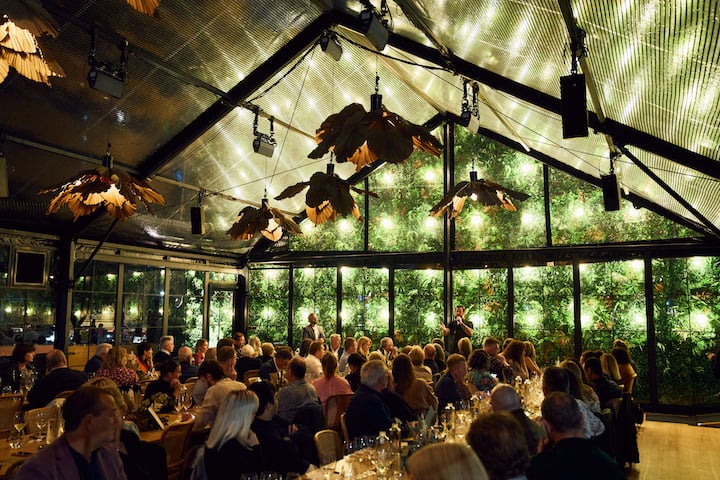
-
Table of Contents
Sustainable Fashion: Ethical Choices for a Stylish and Eco-Friendly Wardrobe.
Introduction:
Sustainable fashion is a growing movement that aims to address the environmental and ethical issues associated with the fashion industry. It encourages individuals to make conscious choices when it comes to their wardrobe, considering the impact of their clothing on the planet and the people involved in its production. By opting for sustainable fashion, individuals can create a stylish and eco-friendly wardrobe that aligns with their values and contributes to a more sustainable future.
The Impact of Fast Fashion on the Environment and Society
The fashion industry has undergone a significant transformation in recent years, with the rise of fast fashion becoming a dominant force. Fast fashion refers to the rapid production and consumption of inexpensive clothing, driven by constantly changing trends and low prices. While this may seem like a dream come true for fashion enthusiasts on a budget, the environmental and social consequences of fast fashion are far from glamorous.
One of the most pressing issues associated with fast fashion is its impact on the environment. The production of clothing requires vast amounts of resources, including water, energy, and raw materials. According to the United Nations Environment Programme, the fashion industry is responsible for 10% of global carbon emissions, more than all international flights and maritime shipping combined. Additionally, the use of toxic chemicals in textile production and the disposal of textile waste contribute to water pollution and soil degradation.
The fast fashion model also perpetuates a culture of overconsumption and waste. With new collections hitting stores every few weeks, consumers are encouraged to constantly update their wardrobes, leading to a throwaway mentality. The average American throws away 70 pounds of clothing per year, and only a fraction of it is recycled or donated. This excessive consumption not only depletes natural resources but also contributes to the growing problem of textile waste in landfills.
Beyond its environmental impact, fast fashion also has significant social implications. The relentless pursuit of low prices has led to the exploitation of workers in developing countries. Many fast fashion brands outsource their production to countries with lax labor laws and low wages, where workers often endure long hours, unsafe working conditions, and meager pay. This exploitation perpetuates a cycle of poverty and inequality, as workers struggle to make a living wage while multinational corporations reap enormous profits.
The fast fashion industry also perpetuates harmful beauty standards and promotes unhealthy body image. The constant pressure to keep up with ever-changing trends and fit into standardized sizes can lead to body dissatisfaction and low self-esteem. Moreover, the marketing strategies employed by fast fashion brands often rely on unrealistic and heavily photoshopped images, further distorting perceptions of beauty and perpetuating harmful stereotypes.
In light of these environmental and social issues, many consumers are seeking alternatives to fast fashion and embracing sustainable fashion. Sustainable fashion refers to clothing that is produced and consumed in a way that is environmentally friendly, socially responsible, and economically viable. This includes using organic and recycled materials, reducing waste and pollution throughout the supply chain, and ensuring fair wages and safe working conditions for workers.
There are several ways individuals can make more ethical choices when it comes to their wardrobe. One option is to buy second-hand or vintage clothing, which not only reduces waste but also gives old garments a new lease on life. Another option is to support brands that prioritize sustainability and transparency in their production processes. These brands often use eco-friendly materials, implement fair labor practices, and provide information about their supply chain.
In conclusion, the fast fashion industry has had a detrimental impact on the environment and society. The excessive consumption, waste, and exploitation associated with fast fashion are unsustainable and harmful. However, by embracing sustainable fashion and making more ethical choices, individuals can contribute to a more stylish and eco-friendly wardrobe. It is time to rethink our approach to fashion and prioritize the well-being of both people and the planet.
How to Build a Sustainable Wardrobe on a Budget
Sustainable fashion is becoming increasingly popular as people become more aware of the environmental and ethical impact of the fashion industry. However, many people believe that building a sustainable wardrobe is expensive and out of reach for those on a budget. The good news is that it is possible to build a sustainable wardrobe without breaking the bank. By making conscious choices and being mindful of your purchases, you can create a stylish and eco-friendly wardrobe that aligns with your values.
One of the first steps to building a sustainable wardrobe on a budget is to assess your current wardrobe. Take a look at what you already own and identify the pieces that are timeless and versatile. These are the items that you can continue to wear for years to come, reducing the need for constant new purchases. Consider donating or selling any items that you no longer wear or that don’t align with your sustainable fashion goals.
Next, it’s important to prioritize quality over quantity. Instead of buying cheap, fast fashion items that will quickly wear out, invest in high-quality pieces that will last. Look for clothing made from sustainable materials such as organic cotton, hemp, or recycled fabrics. These materials are not only better for the environment but also tend to be more durable and long-lasting.
When shopping for new items, consider buying second-hand or vintage clothing. Thrift stores, consignment shops, and online platforms like Depop and Poshmark are great places to find unique and affordable pieces. Buying second-hand not only saves money but also reduces the demand for new clothing production, which is a major contributor to environmental pollution.
Another way to build a sustainable wardrobe on a budget is to embrace minimalism. Instead of constantly chasing the latest trends, focus on building a capsule wardrobe with a few key pieces that can be mixed and matched to create multiple outfits. This not only saves money but also reduces the amount of clothing waste generated. Choose classic, timeless styles that won’t go out of fashion, and opt for neutral colors that can be easily paired with other items.
In addition to being mindful of the clothing you buy, it’s also important to take care of your clothes to make them last longer. Follow the care instructions on the labels, wash items in cold water, and air dry whenever possible. Avoid using harsh chemicals or excessive heat, as these can damage the fabric and shorten the lifespan of your clothes. By taking proper care of your garments, you can extend their wearability and reduce the need for frequent replacements.
Building a sustainable wardrobe on a budget is not only good for the planet but also for your wallet. By making conscious choices, prioritizing quality over quantity, and embracing second-hand and vintage clothing, you can create a stylish and eco-friendly wardrobe without breaking the bank. Remember, sustainable fashion is not about perfection but about making small, incremental changes that add up over time. So start today and take the first step towards a more ethical and sustainable wardrobe.
Sustainable Fashion Brands: Promoting Ethical and Eco-Friendly Practices
Sustainable Fashion Brands: Promoting Ethical and Eco-Friendly Practices
In recent years, there has been a growing awareness and concern about the environmental impact of the fashion industry. From the excessive use of natural resources to the pollution caused by textile production, the fashion industry has been criticized for its unsustainable practices. However, there is a silver lining in this story. A new wave of sustainable fashion brands has emerged, promoting ethical and eco-friendly practices that are revolutionizing the industry.
One of the key principles of sustainable fashion brands is the use of environmentally friendly materials. Traditional fashion brands often rely on synthetic fibers such as polyester, which are derived from non-renewable resources and take hundreds of years to decompose. In contrast, sustainable fashion brands prioritize the use of organic and natural materials, such as organic cotton, hemp, and bamboo. These materials are grown without the use of harmful pesticides and require less water and energy to produce. By choosing sustainable fashion brands, consumers can reduce their carbon footprint and contribute to a healthier planet.
Another important aspect of sustainable fashion brands is their commitment to fair labor practices. The fashion industry has long been associated with exploitative labor conditions, with workers in developing countries often subjected to long hours, low wages, and unsafe working conditions. Sustainable fashion brands, on the other hand, prioritize fair trade and ensure that their workers are paid a living wage and provided with safe and healthy working environments. By supporting these brands, consumers can help improve the lives of garment workers and promote social justice.
Sustainable fashion brands also strive to minimize waste and promote circularity in the fashion industry. Traditional fashion brands often produce large quantities of clothing, much of which ends up in landfills. In contrast, sustainable fashion brands focus on creating high-quality garments that are designed to last. They also encourage recycling and upcycling, transforming old garments into new ones and reducing the need for new production. By embracing circularity, sustainable fashion brands are challenging the throwaway culture of fast fashion and promoting a more sustainable approach to consumption.
In addition to their ethical and eco-friendly practices, sustainable fashion brands are also known for their stylish designs. Gone are the days when sustainable fashion was associated with shapeless and unflattering clothing. Today, sustainable fashion brands offer a wide range of stylish and trendy options that cater to different tastes and preferences. From minimalist basics to bold and colorful statement pieces, there is something for everyone in the world of sustainable fashion. By choosing sustainable fashion brands, consumers can look good and feel good about their choices.
In conclusion, sustainable fashion brands are leading the way in promoting ethical and eco-friendly practices in the fashion industry. By using environmentally friendly materials, ensuring fair labor practices, promoting circularity, and offering stylish designs, these brands are revolutionizing the way we think about fashion. As consumers, we have the power to make a difference by supporting sustainable fashion brands and making ethical choices for a stylish and eco-friendly wardrobe. Together, we can create a more sustainable and responsible fashion industry for future generations.In conclusion, sustainable fashion offers individuals the opportunity to make ethical choices when building a stylish and eco-friendly wardrobe. By opting for sustainable materials, supporting fair trade practices, and embracing circular fashion, consumers can contribute to a more sustainable and responsible fashion industry. Making conscious decisions about clothing purchases and embracing a minimalist mindset can also help reduce waste and promote a more sustainable lifestyle. Ultimately, sustainable fashion allows individuals to express their personal style while minimizing the negative impact on the environment and supporting ethical practices within the industry.





